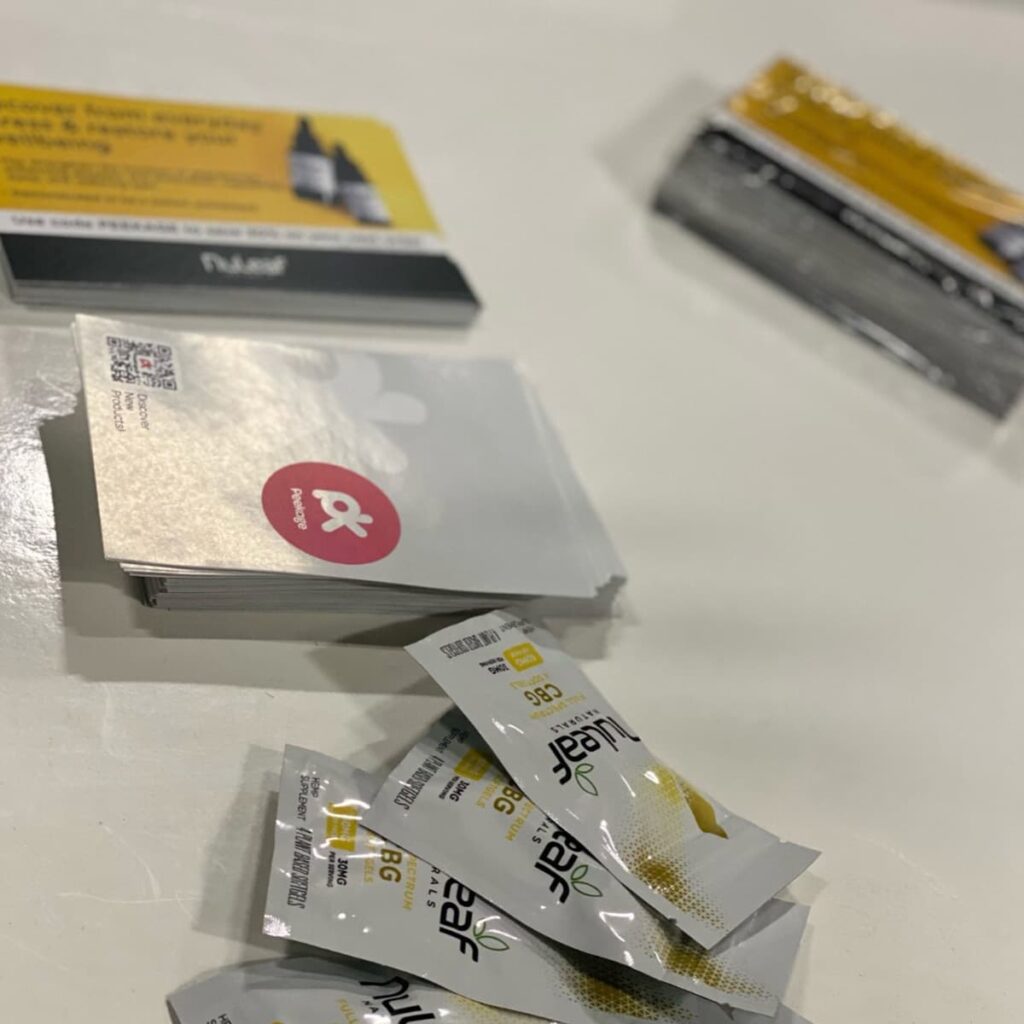Launching a product, campaign, or idea without validation can feel like walking a tightrope without a safety net. You may have the most innovative creative concept, but if it doesn't land with your audience, all the effort, time, and budget spent can go to waste. That's where creative concept testing becomes essential! It provides actionable consumer insights before you go live, so you can iterate confidently and reduce risk.
In this guide, we'll walk you through what creative concept testing is, why it's vital, how to do it, and how to make the most of the tools and insights available. Whether you're conducting ad concept testing, evaluating product packaging, or refining brand visuals, you'll discover proven methods to turn feedback into creative firepower.
What Is Creative Concept Testing?
Creative concept testing is the process of evaluating an idea, such as an ad, product concept, or brand positioning, by presenting it to a representative audience and collecting feedback before it is finalized or launched. The goal is to determine how well the concept resonates in terms of appeal, clarity, uniqueness, emotional response, and alignment with customer needs.
This process helps businesses avoid launching concepts that may confuse, alienate, or underwhelm their audience. It's not about seeking perfection; it's about identifying whether the direction you're heading is viable and impactful.
It can be applied at multiple stages of the creative or development process:
- Early ideation (testing raw ideas)
- Mid-stage refinement (comparing variations)
- Pre-launch validation (final confirmation)
By integrating testing into your creative workflow, you gain clarity and avoid costly post-launch pivots.
Why Creative Concept Testing Matters
When timelines are tight or budgets are stretched, testing may feel like a luxury. But in reality, skipping this step often leads to greater costs down the road, both financial and reputational. Concept testing acts as a safety net, allowing teams to make informed, customer-driven decisions.
Key reasons to incorporate concept testing include:
- Minimizing Risk: It identifies potential issues in messaging, visuals, or product-market fit before launch.
- Optimizing for Impact: Testing helps you fine-tune elements such as tone, imagery, and copy for better engagement.
- Validating Value Propositions: It ensures your messaging clearly communicates the unique benefits of your offering.
- Aligning Internal Stakeholders: Testing provides objective data that can unite marketing, product, and leadership around the right direction.
- Increasing Confidence to Launch: When feedback supports your concept, your team can execute with clarity and conviction.
Researches show that 80% of new product launches fail to meet revenue targets. Testing early and often helps you stay in the successful minority.
Common Methods of Concept Testing
There are various methods to test creative concepts, each suited to different stages, goals, and resources. A well-rounded testing approach typically involves a mix of qualitative and quantitative methods.
Here are some of the most effective:
- Surveys
Surveys are a cost-effective and scalable way to collect structured feedback on different concepts. They're useful for identifying trend studies, preferences, and quantitative data points like clarity, uniqueness, and appeal.
- Focus Groups
Focus groups allow you to explore emotional reactions, hesitations, and deeper reasoning behind audience preferences. They work best when you need to understand not just what people think, but why they think it.
- A/B Testing
When concepts are already live or can be tested in-market (e.g., ad variations), A/B testing reveals which version drives better performance metrics: click-through rate, conversion, engagement, etc.
- Mockups and Storyboards
For visual ideas like branding, advertising, or packaging, presenting mockups lets users respond to the creative in a near-final format. This is helpful for testing layout, design, and brand recognition.
- Prototyping
Useful for digital products or new features, prototypes let users interact with a working model. Observing how people engage with your prototype helps prioritize usability issues and refine messaging at the same time.
Each method has trade-offs in terms of speed, cost, and depth of insight. Choose based on your goals, timeline, and what you need to learn. This table can also help you choose better and faster:
| Method | What It Does | Best For |
| Surveys | Gathers structured, quantifiable feedback | Measuring general appeal |
| Focus Groups | Provides deep insights through moderated discussion | Exploring emotional reactions |
| A/B Testing | Tests two (or more) versions in-market | Real-time behavioral data |
| Mockups/Storyboards | Lets users respond to visual creatives | Pre-launch validation |
| Prototyping | Demonstrates product usability | Feature prioritization |
How to Run a Creative Concept Test: A Step-by-Step Guide
Running an effective concept test is a structured process. The goal isn't just to gather opinions, but to generate clear, actionable insights that inform what to improve, discard, or launch confidently.
Step 1: Define What You're Testing
Start by identifying the element or idea under evaluation. Is it a tagline, landing page, product concept, or ad layout? Be specific, so the feedback you collect stays focused and actionable.
Step 2: Identify Your Target Audience
Use well-developed customer personas or actual segments from your customer base. Test your concept with the same type of audience it's intended to reach, not just any available group.
Step 3: Create Test Materials
Develop simple, focused assets such as concept descriptions, images, landing pages, or short video clips. Avoid overly polished assets that might distract from what you're actually trying to test.
Step 4: Select the Right Testing Method
Choose the method based on your budget and needs. Surveys and A/B tests work well for rapid feedback, while focus groups and interviews deliver deeper context and emotional reactions.
Step 5: Collect and Analyze Responses
Look for patterns in the data: Which messages resonate most? What causes confusion? Which version leads to higher recall, appeal, or purchase intent?
Step 6: Refine and Retest
Testing should be iterative. Use initial results to improve weaker concepts, then run a second round if needed to validate the updated version before going live.
By following a clear, methodical process, you ensure that creative testing becomes a decision-making tool, not just a checkbox.
Tools and Platforms to Support Concept Testing
Modern concept testing is more accessible than ever thanks to user-friendly platforms. These tools help you deploy surveys, run live tests, and gather qualitative insights without the need for an in-house research team.
Popular tools include:
| Platform | Unique Feature | Best Use Case |
| Peekage | Consumer insights with survey follow-up | Physical product testing |
| Google Forms | Free and fast survey tool | Early-stage feedback |
| UsabilityHub | Quick concept testing for visuals/copy | Campaign pre-launch testing |
| PlaybookUX | Remote video interviews | Deep qualitative insights |
Choosing the right platform depends on whether you need scale, speed, or depth of insight. It's often best to combine tools to cover both quantitative metrics and qualitative context.
Put Ideas to the Test with Peekage: Before investing in full-scale campaigns, use a consumer insight platform like Peekage to validate your creative concepts with real, psychographically targeted audiences. By understanding how your ideas resonate emotionally and cognitively, you can refine messaging, visuals, and positioning, ensuring your creative hits the mark.
Best Practices for Successful Concept Testing
The quality of insights you receive is directly tied to how well you structure your concept test. Here are the key best practices to follow:
1. Present Concepts Clearly
Ensure that participants understand what they're reviewing. Use simple, jargon-free language and add enough context so the audience knows what they're evaluating and why.
2. Test One Variable at a Time
Don't test multiple ideas in one concept. Isolate individual elements like headline copy, color schemes, or product features to determine which specific factors drive preference or confusion.
3. Use Consistent Scoring Criteria
Ask participants to rate concepts using standard criteria, such as:
- Relevance
- Clarity
- Uniqueness
- Trustworthiness
- Purchase intent
This makes it easier to compare concepts side-by-side and spot clear winners.
4. Capture Open-Ended Feedback
Beyond ratings and rankings, leave room for comments. Participants may reveal insights you didn't anticipate, such as unexpected emotions or cultural interpretations.
5. Analyze with Objectivity
It's easy to favor the concept you personally prefer. But let the data guide your decisions, even if it means pivoting from an idea you were excited about.
When to Use Creative Concept Testing
Concept testing isn't just for major product launches. It can and should be integrated into many points in your marketing and product lifecycle:
- Pre-Launch: Validate product features, naming, or positioning before development finishes.
- Rebranding: Test updated brand elements such as logo, colors, or mission statement.
- Advertising: Compare different ad creatives before investing in a full campaign rollout.
- Product Packaging: Identify which design drives shelf appeal and brand perception.
- Landing Pages: Use A/B testing to determine which page drives more sign-ups or conversions.
Embedding testing into these workflows not only reduces guesswork but also enhances outcomes across departments such as product, design, marketing, and CX.
Conclusion
Creativity without feedback is a gamble. By incorporating creative concept testing into your process, you gain clarity, reduce risk, and build with purpose. Whether you're designing a new product, revamping your messaging, or launching a new campaign, testing reveals what your audience actually wants before you commit time and money.
In a world where attention is short and competition is fierce, aligning with your audience through data-backed creative decisions is the difference between a campaign that fades and one that flourishes.
Great ideas deserve validation. Let testing help you turn imagination into impact.
FAQs
Creative concept testing focuses on emotional and cognitive responses to an idea, while usability testing focuses on how users interact with a finished product or interface.
Surveys and online tests can run for 3-7 days. Qualitative methods like focus groups may take longer to schedule and analyze; typically 1-2 weeks.
Include the concept (described clearly or shown visually), followed by a mix of multiple-choice questions, Likert scale ratings, and at least one open-ended question for deeper feedback.
Absolutely. Even informal testing with 10-20 participants can surface valuable feedback that improves outcomes. Tools like Google Forms and Typeform make low-cost testing easy.
Yes, testing legacy assets can help you identify evergreen elements that still resonate.
References
- The ultimate guide to market research: How to conduct it like a pro, Qualtrics,
https://www.qualtrics.com/experience-management/research/market-research-guide/ - Launching A New Product [Timeline Guide], Ask Attest,
https://www.askattest.com/blog/articles/launching-a-new-product-timeline-guide - How to Reach a Target Audience, Survey Monkey,
https://help.surveymonkey.com/en/surveymonkey/solutions/target-audience/ - How to Determine Sample Size for Quantitative Research, Quantilope,
https://www.quantilope.com/resources/glossary-how-to-determine-sample-size-for-quantitative-research




